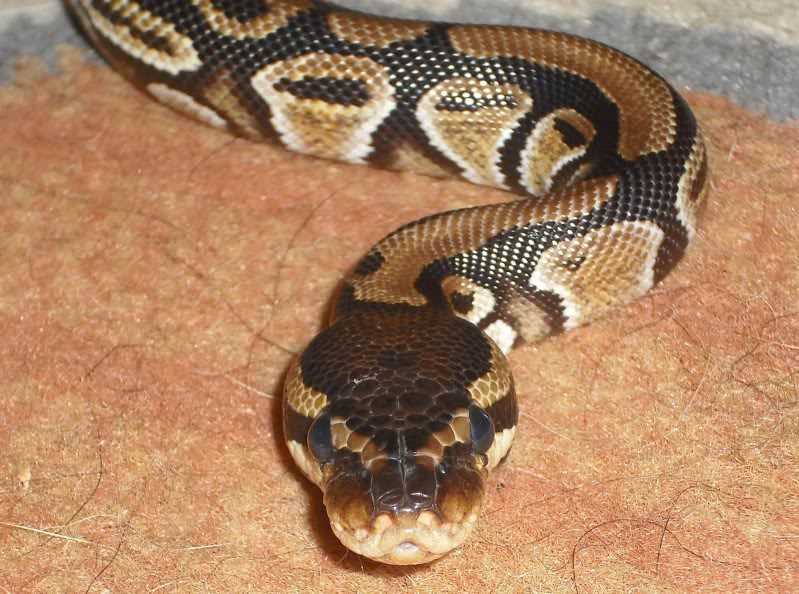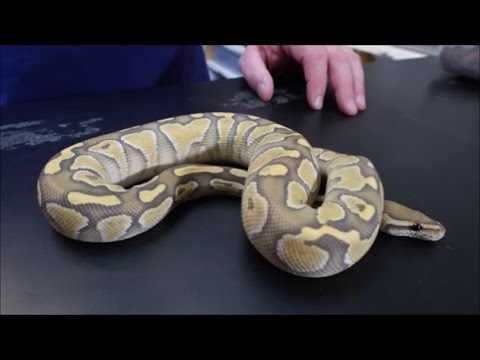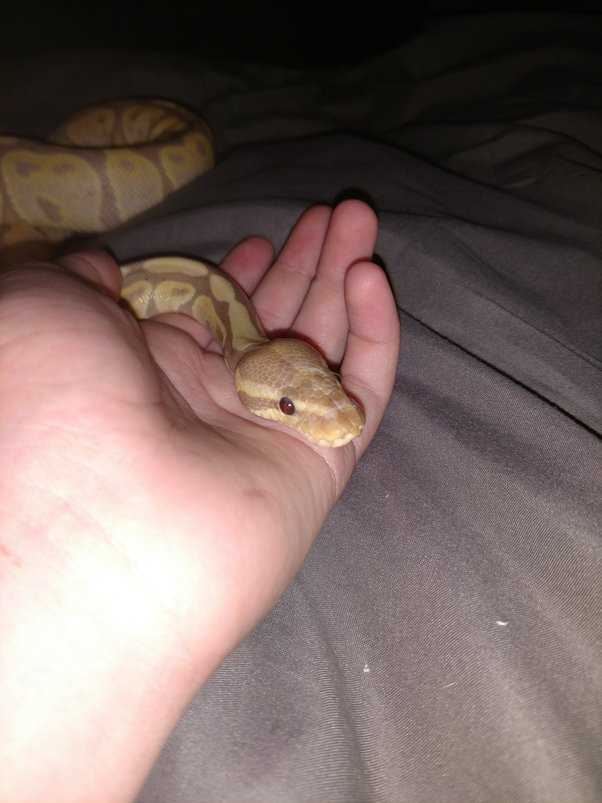
Ball pythons are mesmerizing creatures that have captivated reptile enthusiasts with their unique patterns and striking poses. With their beautiful markings and calm temperament, they make perfect subjects for photography. If you’re an aspiring photographer looking to capture stunning photos of your snake, this article is for you.
When photographing your ball python, it’s important to understand their natural behavior and locomotion. These amazing reptiles have the ability to curl into a tight ball, hence their name. This distinctive pose not only showcases their pattern and coloration but also adds a touch of elegance to the photograph. Be patient and wait for the perfect moment when your ball python strikes a pose.
To capture the true essence of your snake, experiment with different angles and lighting. Try shooting from above to highlight the unique patterns on their scales or get down to eye level for an intimate portrait. Natural lighting can also enhance the beauty of your ball python, so consider taking your photos outdoors or near a window. Don’t forget to use a macro lens to capture the intricate details and textures of the snake’s skin.
Adding props to the photo can also create a visually interesting composition. Branches, leaves, and rocks can mimic the snake’s natural habitat and make the photo more dynamic. Just remember to choose props that won’t harm or stress your ball python. Safety should always be a priority, both for you and your reptile friend.
So, grab your camera, find a suitable location, and let your ball python strike a pose. With some patience, creativity, and a passion for these majestic creatures, you’ll be able to capture stunning photos that showcase the beauty of your ball python and make a lasting impression.
Physical Appearance
Ball pythons have a stout build and can grow to be around 3 to 5 feet long, with females being slightly larger than males. They have a distinct head shape with a triangular pattern on top, just behind the eyes. Their bodies are covered in smooth scales, which give them a glossy appearance. The color and pattern of their scales can vary depending on their geographic location and individual genetics.
Habitat and Behavior
In the wild, ball pythons are primarily found in grasslands and savannas, where they spend most of their time hiding in burrows or under rocks. They are nocturnal creatures, meaning they are most active during the night and prefer to stay hidden during the day. Ball pythons are also known for their ability to curl up into a tight ball when they feel threatened, with their head tucked in the center. This behavior helps them protect their vulnerable head and body from predators.
Ball pythons are constrictors, which means they wrap their bodies around their prey and squeeze until the prey is suffocated. They primarily feed on small mammals like rodents, using their sharp teeth and powerful jaws to catch and consume their prey. In captivity, ball pythons are often fed a diet of frozen and thawed rodents.
Keeping Ball Pythons as Pets
When keeping a ball python as a pet, it is essential to provide them with an appropriate enclosure that mimics their natural habitat. This includes providing a hiding spot, a water bowl for drinking and soaking, and proper heating and lighting. Ball pythons require a temperature gradient in their enclosure, with a warm side and a cool side, to regulate their body temperature.
| Important Points |
|---|
| – Ball pythons are a type of python native to Africa. |
| – They have a unique and beautiful pattern on their scales. |
| – Ball pythons are docile and easy to handle, making them suitable pets. |
| – They require specific environmental conditions and proper care. |
Choosing the Right Camera Equipment for Stunning Ball Python Photos
Here are some key factors to consider when selecting camera equipment for photographing ball pythons:
- Camera Type: For the best results, use a digital SLR camera or a mirrorless camera that allows for interchangeable lenses. These types of cameras offer more control over settings and produce high-resolution images.
- Lens Choice: When photographing ball pythons, a macro lens is highly recommended. A macro lens allows for close-up shots of the snake, capturing the intricate details of its skin pattern and texture.
- Image Stabilization: Look for a camera or lens with built-in image stabilization, as snakes can be unpredictable and may move suddenly during a photo shoot. Image stabilization helps to reduce blur caused by camera shake.
- Lighting: Consider the lighting conditions in which you will be photographing your ball python. A camera with good low-light performance is essential for capturing sharp images in dimly lit environments.
- Accessories: Don’t forget to invest in essential accessories such as a tripod and a remote shutter release. These tools will help you maintain stability and capture sharp images without disturbing or startling the snake.
Remember, the right camera equipment can greatly enhance your ability to capture stunning photos of your ball python. Take the time to research and invest in quality equipment that suits your specific photography needs. With the right gear in hand, you’ll be well on your way to capturing striking images of these mesmerizing serpents.
Setting Up the Perfect Photo Shoot Location for Your Ball Python
Creating a Reptile-Friendly Environment

Before you begin setting up your photo shoot location, it’s essential to consider the needs of your ball python. As an exotic snake, it requires specific conditions to feel comfortable and secure. Ensure that the temperature and humidity levels in the room are suitable for your snake’s well-being.
Next, choose an area with minimal distractions. This could be a quiet corner of your home or a dedicated reptile room. By reducing external noise and movement, you can help your snake feel less stressed and more inclined to strike stunning poses for the camera.
Using Props and Accessories
Props and accessories can add visual interest to your snake photos and help create a unique atmosphere. Consider using natural elements like rocks, branches, or plants to mimic your ball python’s natural habitat. These can serve as perches or climbing areas for your snake, allowing you to capture different angles and poses.
You can also use a variety of backdrops or textured fabrics to add depth and contrast to your photos. Experiment with different colors and patterns to find what works best for showcasing your ball python’s unique markings and coloration.
Setting Up Lighting
Proper lighting is crucial for capturing stunning photos of your ball python. Natural lighting can create a soft and authentic look, while artificial lighting can provide more control over the light intensity and direction.
Avoid harsh direct lighting that can create unwanted shadows or reflections. Instead, aim for diffused lighting that evenly illuminates your snake. You can achieve this by using softboxes or light diffusers to soften the light source or by positioning your snake near a window with diffused sunlight.
Creating a Safe Environment
Ensure that the photo shoot location is safe for your ball python. Remove any potential hazards or objects that could be harmful or distressing for your pet. Ensure that there are no sharp edges, exposed electrical cords, or toxic materials within reach of your snake.
Add a comfortable and secure surface for your snake to rest on during the photo shoot. A clean, smooth, and non-slippery material like a fabric backdrop or a reptile-safe prop can provide a stable foundation for capturing stunning snake photos.
Conclusion
Creating the perfect photo shoot location for your ball python is essential to capture stunning and captivating photos. By considering your snake’s needs, using props and accessories, setting up proper lighting, and ensuring a safe environment, you can showcase your snake’s unique features and striking poses like never before.
Lighting Tips for Capturing Stunning Snake Photos
Here are some essential lighting tips to consider when photographing a ball python:
1. Natural Light: Whenever possible, utilize natural light as it brings out the best colors and details in the snake’s pattern. Find a location near a window or take your photos outdoors to make the most of the available sunlight.
2. Soft Light: Avoid harsh lighting conditions, as it can create strong shadows and wash out the colors of the snake. Instead, look for soft, diffused light that brings out the natural colors and textures of the ball python.
3. Artificial Lighting: If natural light is not available or sufficient, consider using artificial lighting sources. Softbox lights or continuous LED lights can help replicate the soft, natural lighting conditions desired for snake photography.
4. Avoid Direct Flash: Direct flash can create unflattering highlights and unnaturally illuminate the snake. Instead, experiment with different angles and positions of your lighting to create a more pleasing and balanced look.
5. Side Lighting: Side lighting can create dramatic shadows and highlights, emphasizing the texture and pattern of the snake’s scales. Position your light source at a 45-degree angle to the snake for an intriguing and captivating effect.
6. Backlighting: Experiment with backlighting techniques to create a halo effect around the snake, highlighting its silhouette and creating a sense of depth. This can add a mystical and enchanting element to your snake photos.
7. Reflectors and Diffusers: Use reflectors or diffusers to manipulate and control the intensity and direction of light. Reflectors can bounce light back onto the snake, while diffusers can soften and diffuse harsh light, creating a more balanced and pleasing lighting setup.
Posing Techniques for the Ball Python
Here are some posing techniques to help you capture the perfect image of your ball python:
1. Natural Environment

Firstly, create a natural environment for your ball python. This will help the snake feel comfortable and allow it to exhibit its natural behaviors. Use branches and leaves to mimic its natural habitat, providing opportunities for the snake to curl up or wrap around objects.
2. Showcasing the Patterns
When posing your ball python, focus on capturing its intricate patterns. Allow the snake to stretch out or coil up to showcase its unique markings. Experiment with different angles to highlight the patterns from various perspectives.
3. Ball Python Behaviors
4. Props and Accessories
Introducing props and accessories can add an extra element of interest to your snake photography. Consider using items such as small branches, rocks, or even miniature accessories like hats or glasses. However, ensure that these props do not harm or stress your snake in any way.
5. Experiment with Lighting
Lighting plays a crucial role in capturing stunning snake photos. Experiment with different lighting setups, such as natural sunlight or artificial lighting sources like lamps or strobes. Backlighting can create a mesmerizing effect, emphasizing the snake’s silhouette and patterns.
By following these posing techniques, you can create captivating and visually appealing photographs of your ball python. Remember to prioritize the well-being and comfort of your snake throughout the process, ensuring a positive and enjoyable experience for both you and your reptile companion.
Composition and Framing for Snake Photography
- Experiment with Different Angles: To create visually interesting snake photos, try shooting from different angles. Get down to the snake’s eye level or shoot from above to highlight its unique patterns and textures.
- Rule of Thirds: The rule of thirds is a composition technique that involves dividing your frame into a 3×3 grid and placing your subject along one of the gridlines or at their intersections. By placing your ball python off-center, you can create a more dynamic and visually appealing image.
- Use Leading Lines: Leading lines are elements in a photograph that draw the viewer’s eye towards the subject. Look for natural lines or create your own by arranging objects in a way that directs attention towards your snake.
- Frame within a Frame: Look for natural frames within your environment to add depth and interest to your snake photos. This could be branches, leaves, or even the snake itself coiled up in a way that frames its own body.
- Play with Negative Space: Negative space refers to the empty areas in a photograph. By incorporating negative space around your snake, you can emphasize its shape and make it stand out more.
Editing and Enhancing Your Ball Python Photos
1. Adjusting Exposure and Contrast
One of the first steps in editing your ball python photos is to adjust the exposure and contrast. This can help bring out the intricate patterns and colors of your snake. Use a photo editing software to play with the brightness, contrast, and highlights of the image until you achieve the desired effect.
2. Enhancing Colors
3. Removing Unwanted Elements
While capturing your ball python in a striking pose, you may end up with unwanted distractions in the frame. During the editing process, use the spot healing tool or clone stamp tool to remove any blemishes, dust, or other imperfections that may detract from the overall composition.
4. Sharpening the Image
To enhance the details of your ball python’s scales and patterns, apply a sharpening filter to the image. This will help make the textures more pronounced and give your snake photo a crisp, professional look. Be careful not to over-sharpen, as it can lead to a loss of detail or introduce artifacts.
5. Adding a Creative Touch
Once you have adjusted the exposure, colors, and sharpness of your ball python photo, consider adding a creative touch during the editing process. Experiment with different filters, vignettes, or even overlays to give your image a unique and artistic flair. Remember to stay true to the essence of your snake while exploring creative possibilities.
Overall, the editing and enhancing stage of your ball python photography journey allows you to fine-tune your images and make them truly stunning. Experiment with different techniques, but always keep in mind the natural beauty and unique characteristics of these exotic reptiles. With practice and attention to detail, you can create captivating snake photos that showcase the striking pose and mesmerizing patterns of your ball python.
Sharing and Showcasing Your Stunning Snake Photos
Once you have captured stunning photos of your ball python in striking poses, it’s time to share and showcase your work. Here are some tips on how to effectively share your snake photos:
1. Social Media: Utilize popular social media platforms such as Instagram, Facebook, and Twitter to share your snake photos. Create a dedicated account for your snake photography and use relevant hashtags to reach a wider audience of snake enthusiasts.
2. Exotic Pet Forums: Engage with the online community of exotic pet owners and enthusiasts by sharing your snake photos on forums and discussion boards. These platforms provide a great opportunity to connect with like-minded individuals and receive feedback on your photography.
3. Photography Websites and Blogs: Submit your snake photos to photography websites and blogs that focus on reptiles and exotic animals. This can help you gain exposure and potentially reach a wider audience interested in your unique subject matter.
4. Local Exhibitions and Events: Look for local exhibitions, reptile shows, and events where you can display your snake photos. This allows you to showcase your work in a physical space and connect with individuals who share your passion for these captivating creatures.
5. Print Mediums: Consider printing your snake photos and creating physical copies to display or sell. This can include photo books, prints, or even merchandise featuring your snake photography. Local pet stores, art galleries, or online marketplaces can provide avenues for selling your work.
Remember, when sharing and showcasing your snake photos, always prioritize the well-being and safety of your snake. Never put your snake at risk or in uncomfortable situations for the sake of a photograph.
